Gion Matsuri: Experience Kyoto’s Iconic Summer Festival
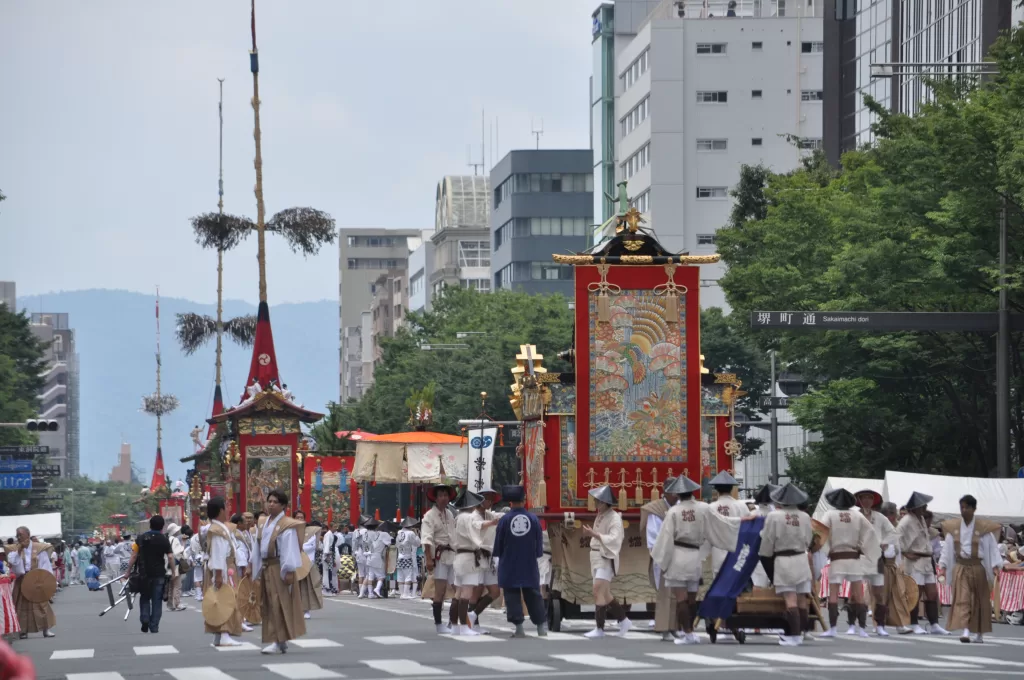
One of Japan’s Three Great Festivals comes alive for a full month in July
Kyoto, the ancient capital of Japan, brims with historical and cultural treasures all year round. However, the city reaches the pinnacle of its charm with the Gion Matsuri, one of the major Kyoto events in July. Known as one of the Three Great Festivals of Japan, Gion Matsuri boasts an impressive 1,150-year history and brings Kyoto’s streets to life with elaborate parades and vibrant celebrations.
Origins of Gion Matsuri: Appeasing the Gods during a Plague
The Gion Matsuri began as a religious observance during the Heian period when a devastating plague threatened the country. Initially held to appease evil spirits believed to have caused the epidemic, the festival continues to honor Kyoto’s Yasaka Shrine and has transformed into a highly anticipated annual event.
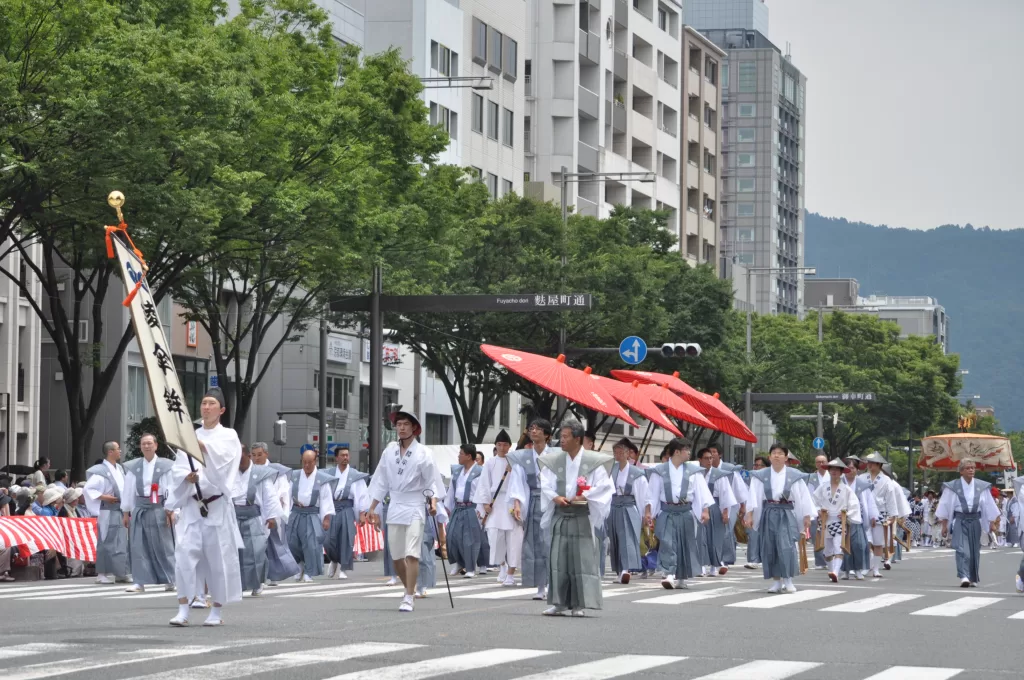
Gion Matsuri: Main Events Schedule
With festivities occurring throughout July, some highlights include:
- Kippu-iri Procession: Participants gather and pray for a successful festival
- Kuji-tori-shiki Ceremony: A lottery to determine float order for parades
- Yamaboko-junkō Parades: Magnificent “moving museums” featuring intricately decorated floats adorned with legendary objects and artwork take place on July 17th (Saki-matsuri) and July 24th (Ato-matsuri)
- Chimaki Amulets: Unique bamboo grass talismans infused with good fortune
- Yamaboko Hikihajime: Tested for their parade-worthiness before main events on specific dates
- Yoi-yama Evenings: Bustling pre-parade nights with food stalls, musical performances, and display of Komagata lanterns
- Byōbu Matsuri: Locals share their family heirlooms with the public
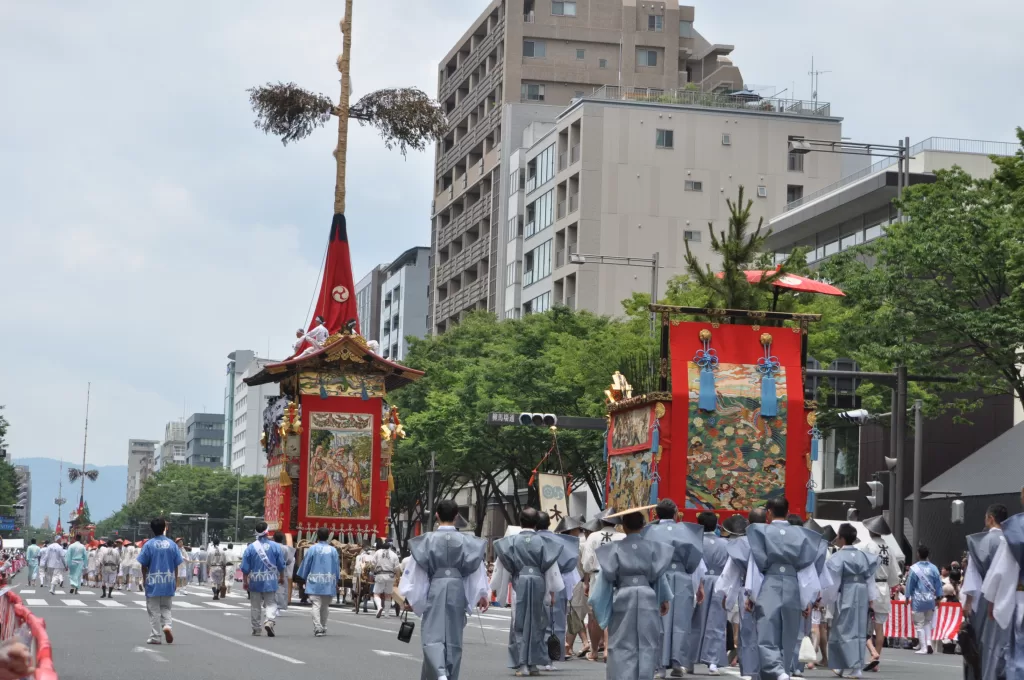
Witness Culture at its Best: Yamaboko-junkō Parade
The centerpiece of Gion Matsuri, the Yamaboko-junkō Parade, is an extravagant display featuring 33 one-of-a-kind floats designated as Important Tangible Cultural Properties. With a combination of 23 Yama and 10 Hoko, the floats are crafted using precious Nishijin weaves and Gobelin tapestries. For spectators, these cultural treasures provide an unparalleled visual feast during both Saki-matsuri and Ato-matsuri parades.
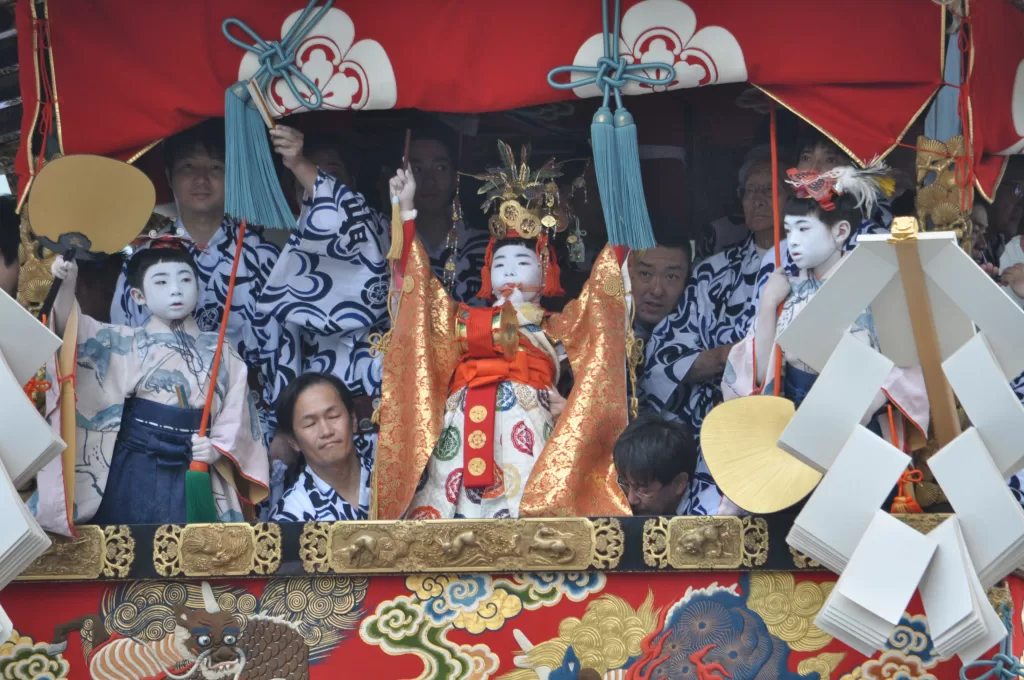
Sacred Child: Divine Messenger’s Role in the Festival
A standout aspect of Gion Matsuri is the local boy chosen each year as a divine messenger. Selected by the city mayor, this sacred child undergoes weeks of purification ceremonies before embarking on his festival duties, including cutting a sacred rope during the parade and serving as the god Susanoo’s page.
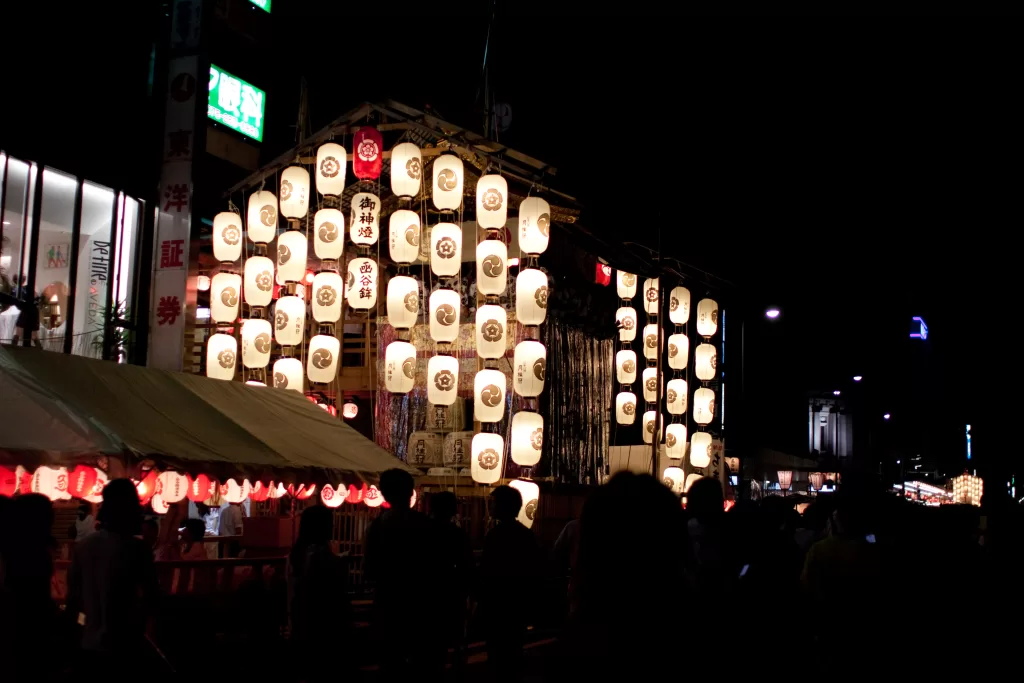
Gion Matsuri Evenings: Kyoto’s Downtown Transforms
On July 15th, 16th, and during the evenings leading up to July 24th, Kyoto’s downtown area becomes a pedestrian paradise filled with food stalls offering a taste of festival favorites such as takoyaki and okonomiyaki. Amidst this lively atmosphere, visitors can enjoy up-close views of floats and artifacts displayed by families in front of traditional machiya houses.
Finding Your Way to Gion Matsuri
Located near Hankyu Karasuma Station and Kyoto City Subway Karasuma-Oike Station, experiencing Gion Matsuri is both convenient and unforgettable. Prepare for large crowds and hot temperatures when planning your visit – lightweight clothing, comfortable shoes, and hydration are essential.
Gion Matsuri provides a unique opportunity to immerse yourself in the rich culture and traditions of Kyoto. Experience parades, street performances, and spiritual ceremonies, all in the celebration of this iconic festival. Don’t miss this remarkable summer event!
Hiwatari Matsuri at Tanukidani-san Fudō-in, similar to Gion Matsuri, is a captivating festival that showcases the rich cultural heritage of Japan. While Gion Matsuri is renowned for its grand procession of floats, known as Yamaboko Junko, Hiwatari Matsuri offers a unique experience centered around firewalking. Both festivals captivate spectators with their distinctive traditions and vibrant celebrations.